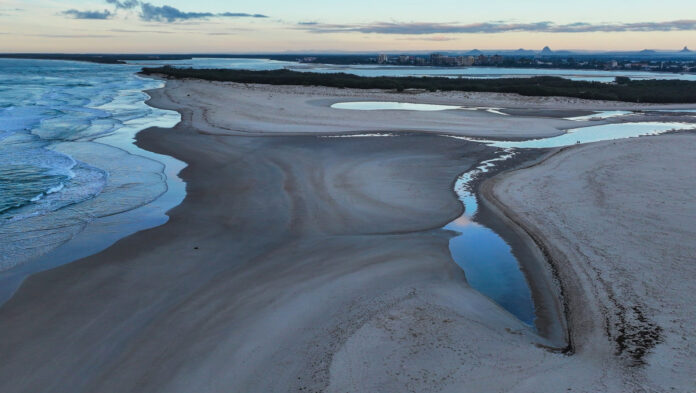UPDATED: A super-high tide has breached the Caloundra bar, after there were concerns the Pumicestone Passage could be completely closed off at its northern end.
Caloundra Coast Guard walked along the bar, which had shut in recent weeks, 15 minutes after a high tide of 2.1m late on Thursday night to discover water flowing over the sand. Water was then seen flowing over the bar on an average 1.5m tide on Friday.
Commander Roger Pearce said the movement was significant enough.
“There was still quite an inward flow (into the passage) at the height of the tide,” he said.
“It will be some time before the bar is completely closed.
“The next high tides are in a month’s time and these will be in daylight so we should get a much better idea.”
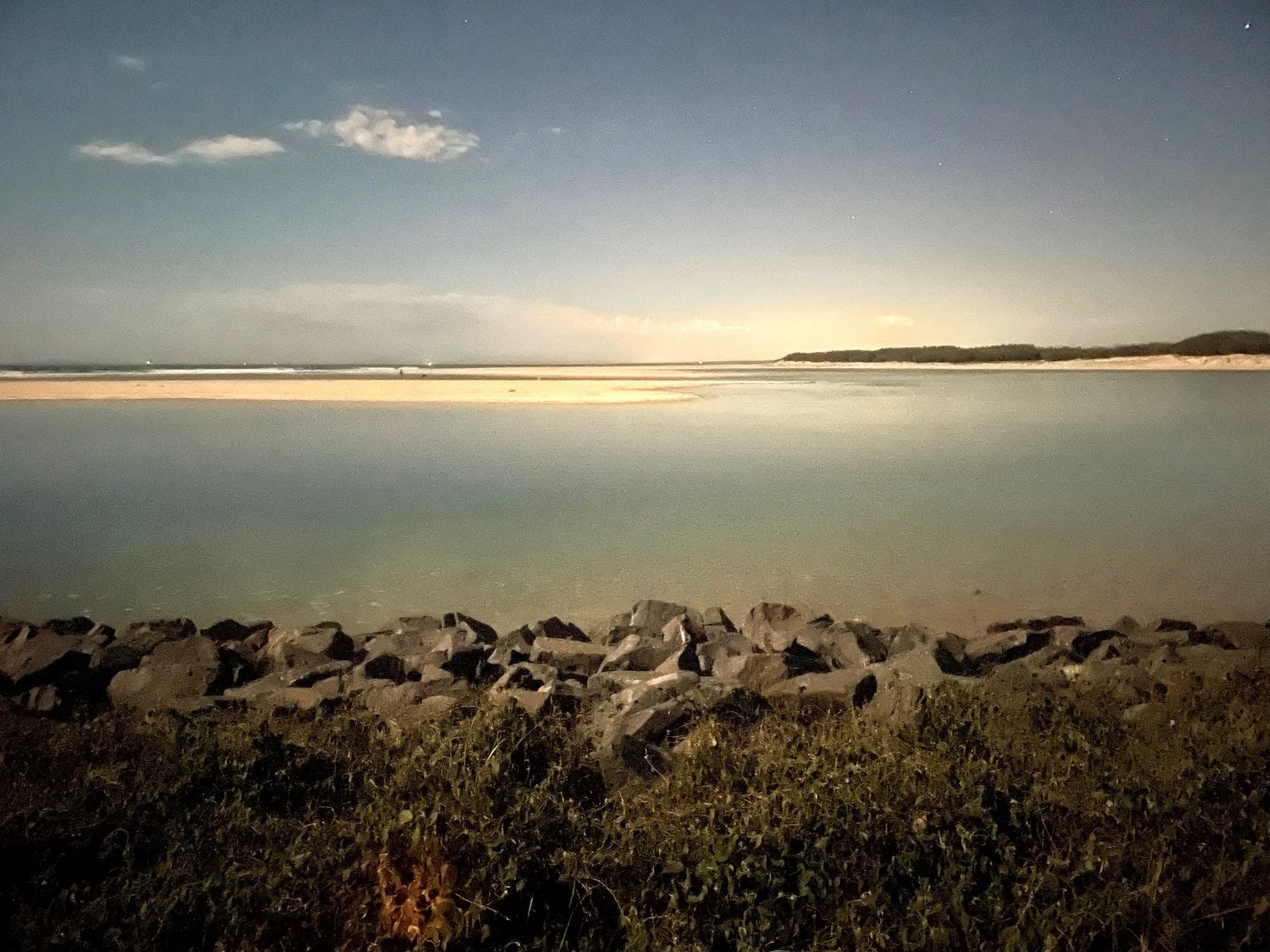
Dead end: bacteria concerns as bar closes
AUGUST 23: The Pumicestone Passage has come to a virtual standstill due to a logjam of sand, as enhanced tests are done on water quality in the area.
The northern end of the waterway at Caloundra resembles a dead end after the bar there closed.
Photographer Doug Bazley captured images of the old entrance at low tide last week showing just how much it was blocked.
He said water was not getting through or over the bar at high tide.
Caloundra Coast Guard commander Roger Pearce said a 1.4m high tide was unable to breach the bar on Tuesday, and that a moment of truth would arrive next week.
“We should have super-high tides on Tuesday of 2.1m so we’ll know then,” he said.
“That will tell us. We will know if it’s completely closed. If it doesn’t go over at 2.1m then nothing will go over.
“But at the moment there is no water anywhere near it.”
The passage has become more clogged since a tidal breakthrough early last year.
That’s prompted increasing concerns – from a local environmental group, Coast Guard, a coastal scientist and a lifeguard service – that the water quality could significantly deteriorate.
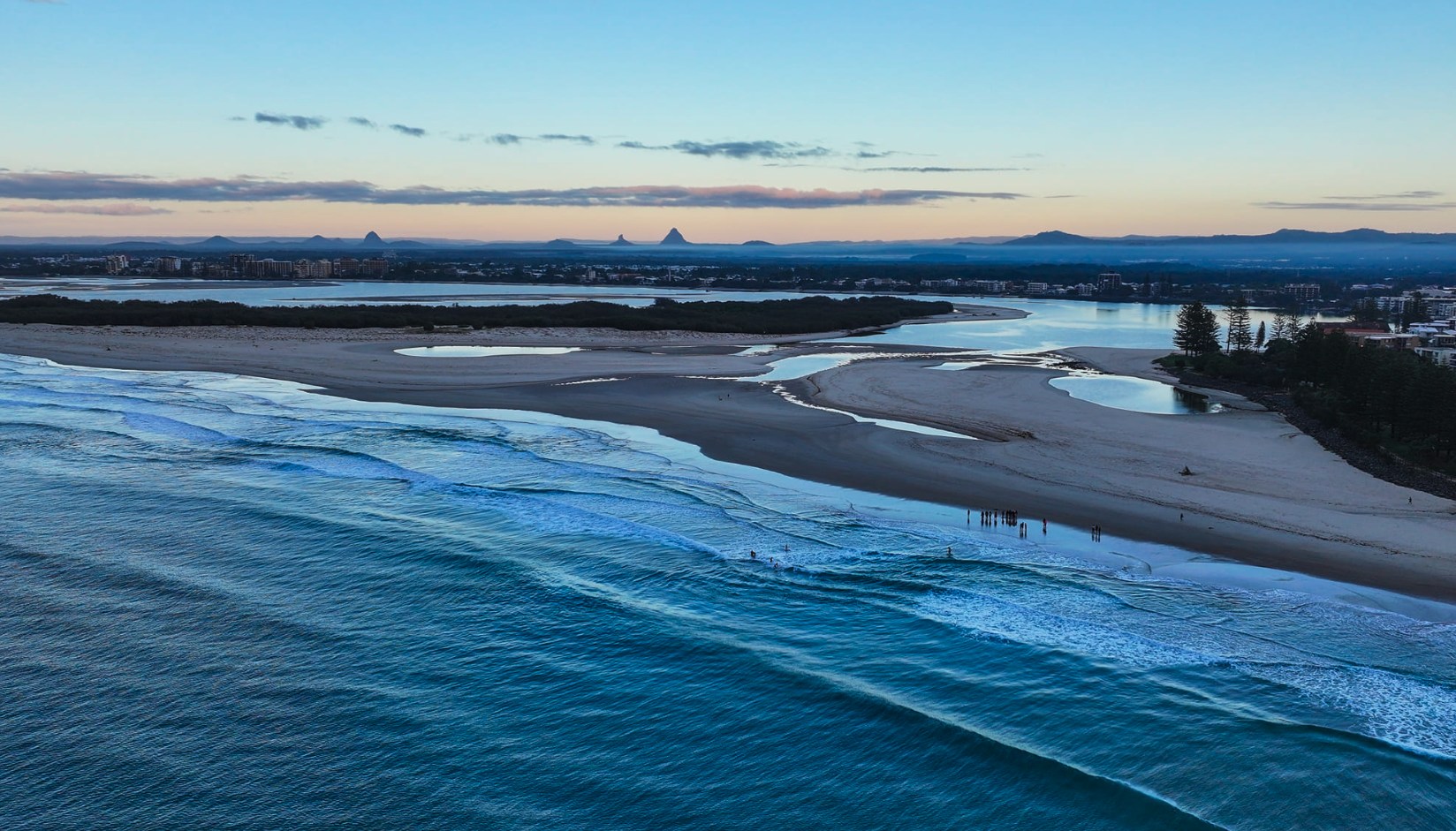
The Department of Environment and Science this month expanded its water testing.
“In response to the changing coastal processes after the Bribie Island breakthrough, we have increased the frequency of monitoring at the five most northern Pumicestone Passage sites, from eight times per year to each month, until August 2024,” a department spokesperson said.
“These sites range from near Caloundra and the passage entrance to south of Pelican Waters.
“We have also started enterococci bacteria monthly monitoring at the five most northern sites.”
The latter measures the possible presence of fecal material and disease-causing viruses and bacteria.
Community group Take Action for Pumicestone Passage has undertaken its own tests, led by a medical doctor with expertise in scientific testing.
They said there was evidence of algae that could potentially lead to harmful algal blooms, and evidence of potentially dangerous amoeba.
“TAPP Inc is concerned that with the closure of the old Caloundra Bar and its natural tidal flushing action, the continual discharge of polluted stormwater into the swimming areas at Bulcock and Golden Beach may pose a health hazard to swimmers and beachgoers,” the group said in a press release.
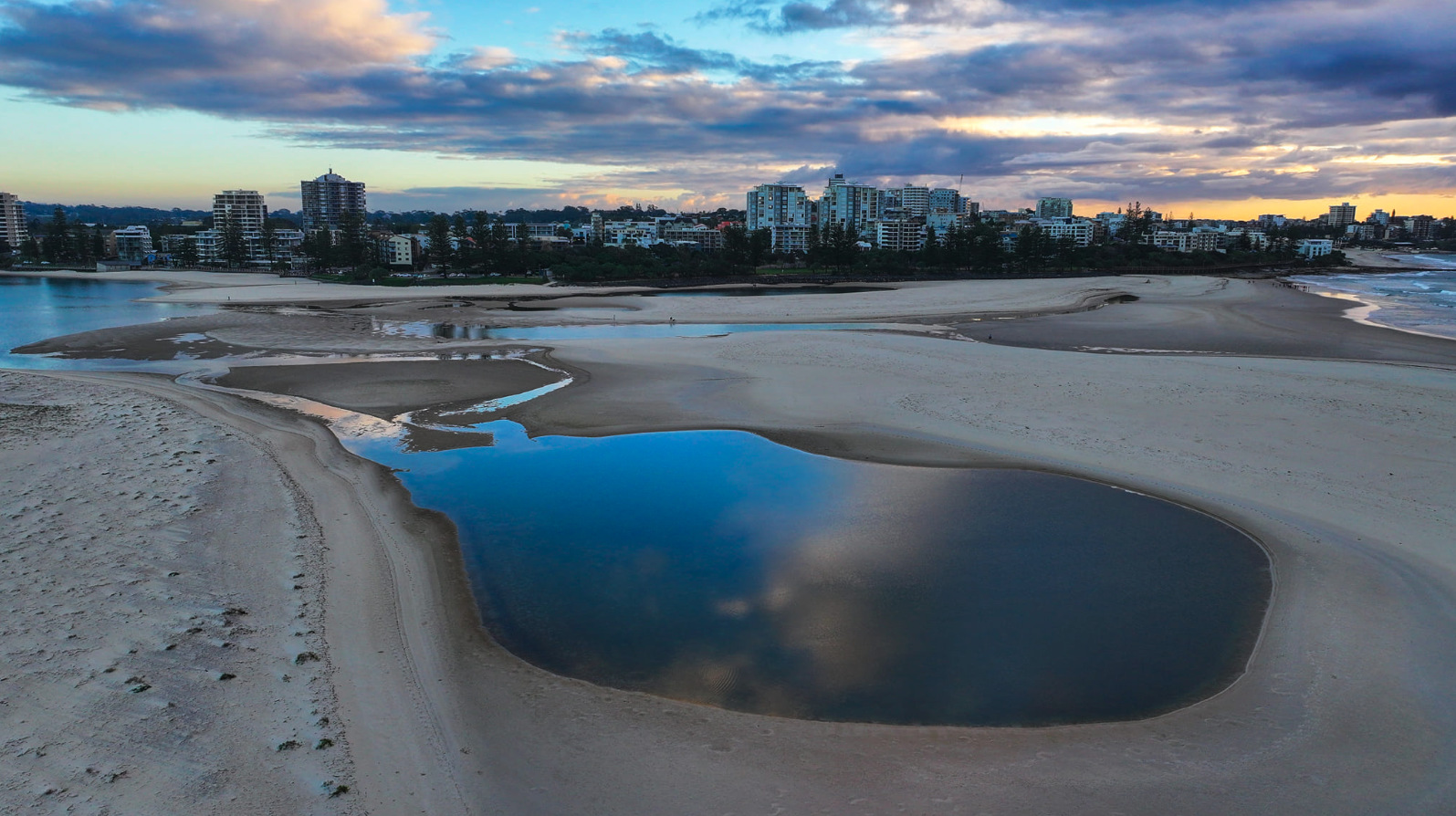
Meanwhile, the DES has introduced further testing measures.
“We have moved one of the department’s portable water-monitoring buoys to the northernmost site in Pumicestone Passage, near Bulcock Beach,” the spokesperson said.
“This buoy is deployed on an as-needed basis and enables continuous data to be collected and displayed while in place.
“This additional monitoring will help us determine if there are any impacts on local water quality, as a result of the naturally changing coastal processes in the area.”
The data was expected to be publicly available from late September.
The DES routinely monitors water quality at 11 sites in the passage as part of the Ecosystem Health Monitoring Program coordinated by Healthy Land and Water.
The results at these sites have not shown a decrease in water quality that is of concern.
The northern end of the passage is a key part of Caloundra’s valuable tourism sector, and fronts businesses and homes at Bulcock Beach, Happy Valley and Golden Beach.
A Southeast Queensland waterways report card produced by Healthy Land and Water gave the passage an overall condition rating of ‘good’ for 2022, declining from ‘excellent’, due to the impact of severe weather events in the catchment.
The next report is due later this year.
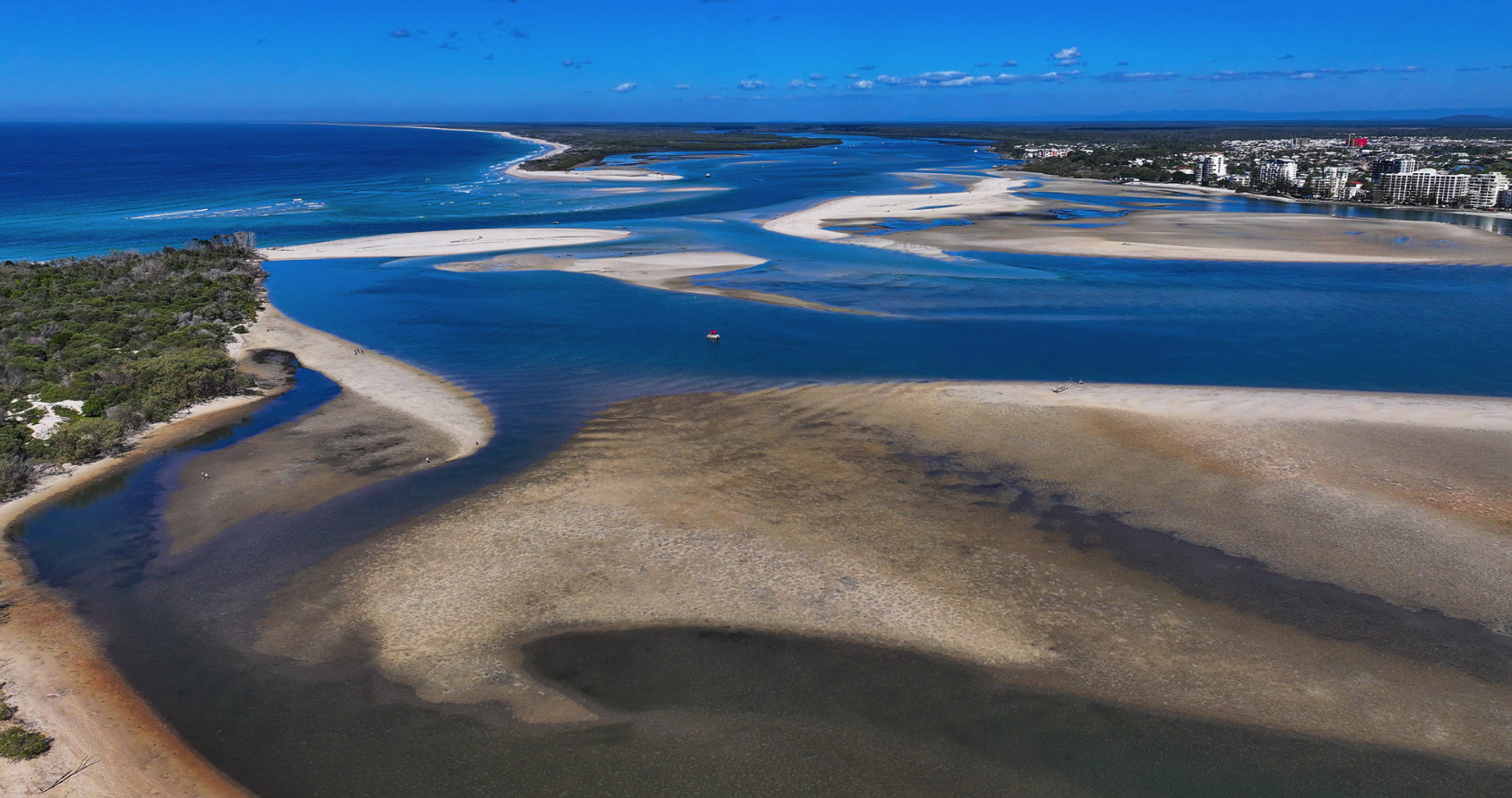
State Member for Caloundra Jason Hunt said he had been in regular contact with DES and it was important to increase water quality testing in the passage.
“We need to keep an eye on it,” he said.
“The community needs to be reassured, as do I, that everything is going well.
“The water quality is still rated good, but I’d like to keep an eye on it, and there is an increase in water testing from August.”
There is also a full-time representative from Maritime Safety Queensland now stationed in the area, to observe the waterway and the boats on it.
“It’s something we had been crying out for, a constant set of government eyes on the passage,” Mr Hunt said.
“It’s a big deal for this end of the coast, particularly after the breakthrough.”
Like stories that inform, connect and celebrate the Sunshine Coast? So do we. Join an independent local news revolution by subscribing to our FREE daily news feed at the bottom of this article.


